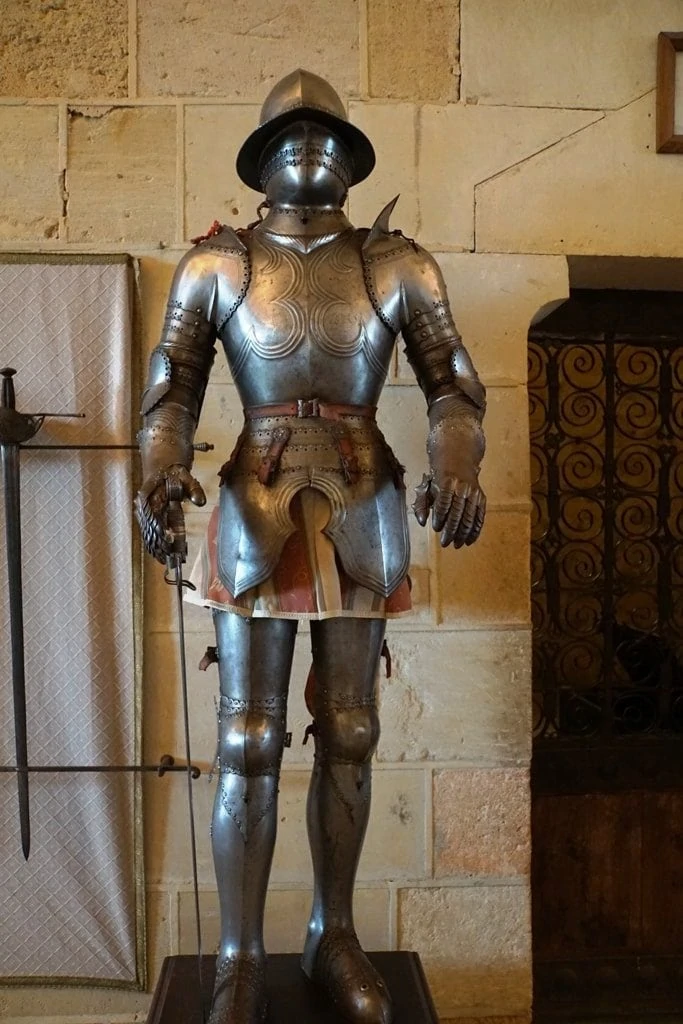About an hour north of Madrid, and strategically placed high on a plateau between two rivers in Spain’s Castile and Leon region, stands the Alcazar de Segovia. The Alcazar, which means palace or fortress in Arabic, is one of Spain’s most dazzling and romantic royal residences.
It even served as inspiration for Walt Disney when he was dreaming up his infamous theme park castles. This monolithic structure was the home to many notable royal families of Europe including members of the House of Burgundy, Trastamara, the Habsburgs, and the Bourbons.
It has served as a fortress from invaders, a royal palace, a state prison, the Royal College of Artillery and Military Historical Archive. The Alcazar de Segovia is one of Spain’s most visited historical and cultural sites and with just one look at this imposing ship-shaped structure with its dark graphite-topped turrets, you’ll see why.
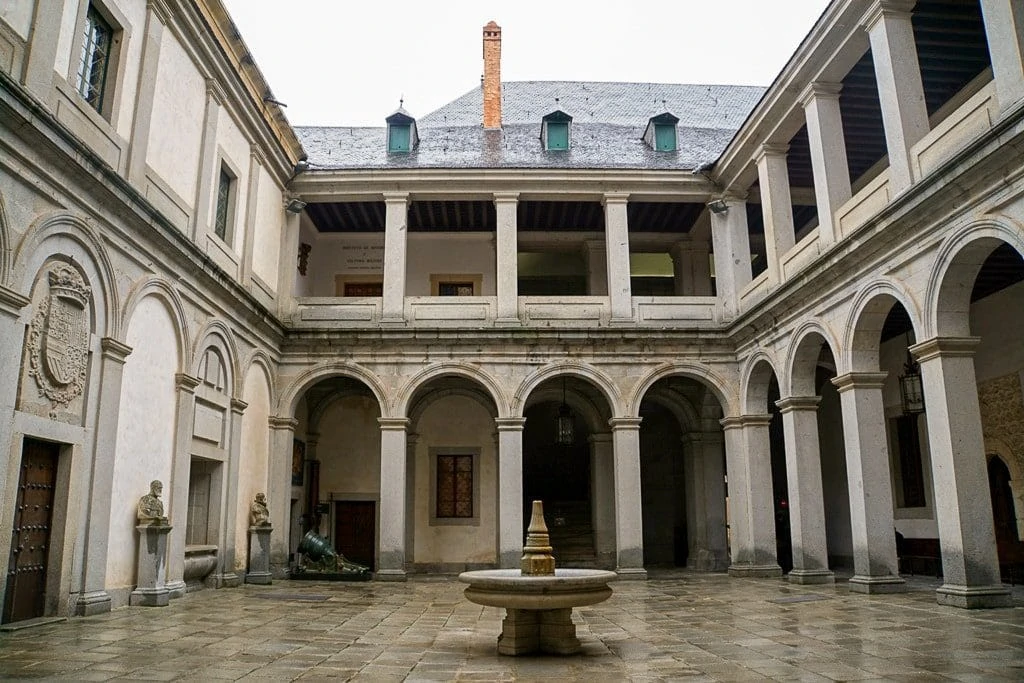
History of the Alcazar of Segovia
The Alcazar of Segovia is thought to have been built upon the foundation of Roman-era ruins between the 7th and 9th centuries during the Moorish rule of the Iberian Peninsula. However, the Alcazar was not mentioned in any documentation until the 12th century. In 1176, King Alfonso VIII and his bride, Eleanor of England chose the Alcazar as their place of residence.
Several buildings from the time of Alfonso VIII and Eleanor have survived, including the Royal Chambers, the Great Hall, the gallery on the north side of the palace, and the armory. Early in the 15th century, during the reign of King John II of Castile, Alcazar’s highest structure was built which we know today as the Juan II Tower.
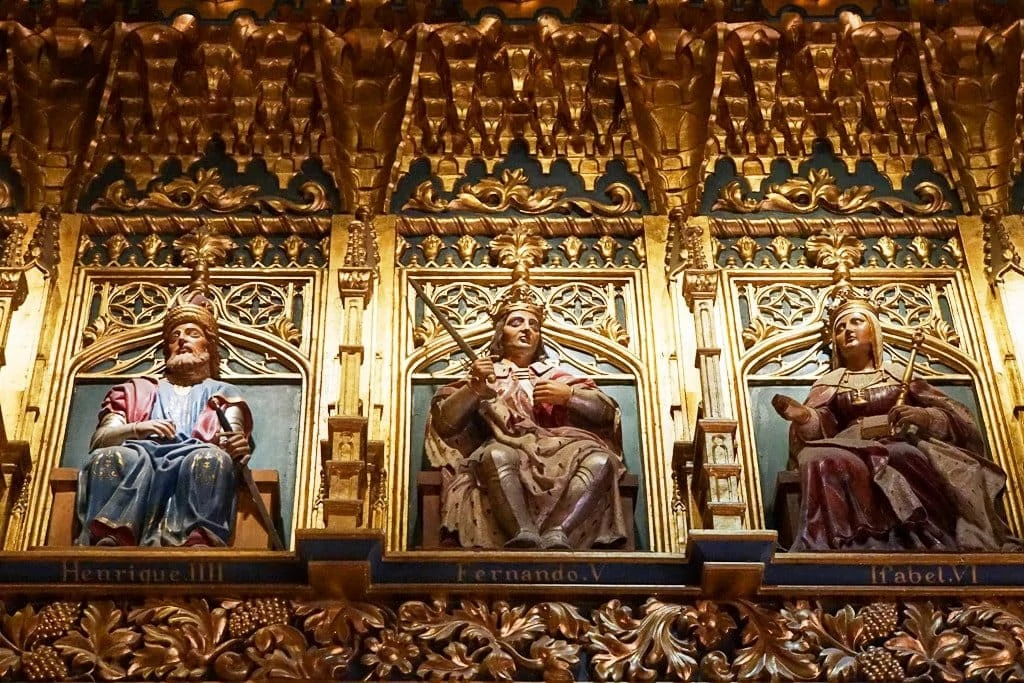
In 1474 the Alcazar’s role in Spanish history was solidified. The future Queen Isabella I of Castile took refuge within the solid walls of the castle upon receiving the news of the death of her brother, Henry IV. The next day, Isabella was crowned Queen of Castile and León at Segovia’s main square.
However, she was not granted the royal title until 5 years later in 1479 when the War of the Castilian Succession came to an end. It’s also a legend that a secret wedding of Isabella and Ferdinand, Duke of Aragon, took place in the Alcazar.
The Alcazar’s storybook appearance, however, dates back to the 16th century during the reign of King Philip II. The king was married to his fourth, and last wife, the young Anna of Austria in the castle in 1570. Philip II conducted a series of renovations transforming the buildings to more closely resemble the castles of Central Europe including the conical, dark slated roofs.
By the end of the 16th century, Philip II had grown tired of the Alcazar de Segovia and moved his court back to Madrid. The Alcazar served as a state prison for 2 years centuries and in 1762, at the behest of King Charles III, the Royal Artillery School took over the palace.
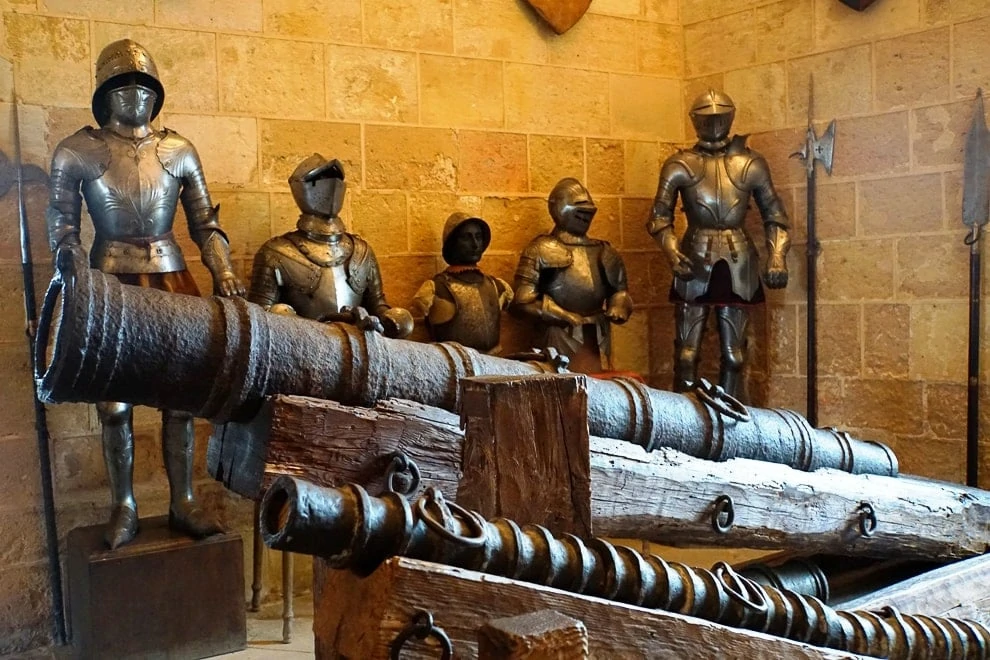
The Alcazar suffered a major fire and was largely rebuilt. In 1896, after the reconstruction, King Alfonso XIII and his mother, Queen Maria Christina, Regent of Austria turned the palace over to the army and to this day, the military archives are still housed at the Alcazar.
You might want to check out:
A day trip to Segovia’s Castle – things to know before visiting the Alcazar of Segovia
How to get to the Alcazar of Segovia
The historic Castilian city of Segovia is located about 100 kilometers from Madrid and easily accessible by many forms of transportation.

By car
If you have a car, you can easily reach Segovia from Madrid. The drive is relatively easy and will take around 90 minutes.
By train
Taking the train from Madrid is by far the most expeditious way to reach Segovia. The journey on the highspeed AVE networks takes approximately 30 minutes. There is at least one train departing from Madrid’s Chamartín train station every hour throughout the day and trains run seven days a week.
Trains arrive at the Guiomar station in Segovia. One-way tickets start at around 9 euros. Note, that the AVE station is outside the city so you need to take a bus from the train station to reach the city center, The bus or a guided tour is the best way to reach the Alcazar from Madrid.
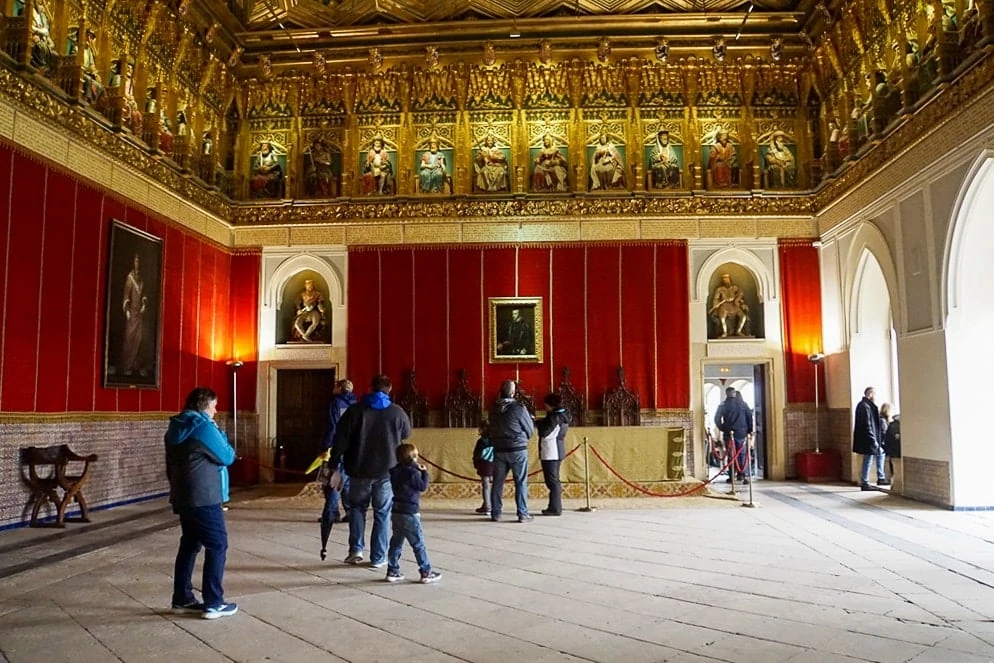
By bus
You can also reach Segovia by bus. The trip takes just under an hour and a half and a roundtrip ticket will cost you around 10 euros. During the week there are around four buses a day that make the trip from Moncloa bus station to Segovia. The first one departs at 6:30 am and the last returns at 9:45 pm. On weekends there are fewer buses available and they start running a little later. Be sure to check the Avanza website for the most up to date timetables and bus schedules.
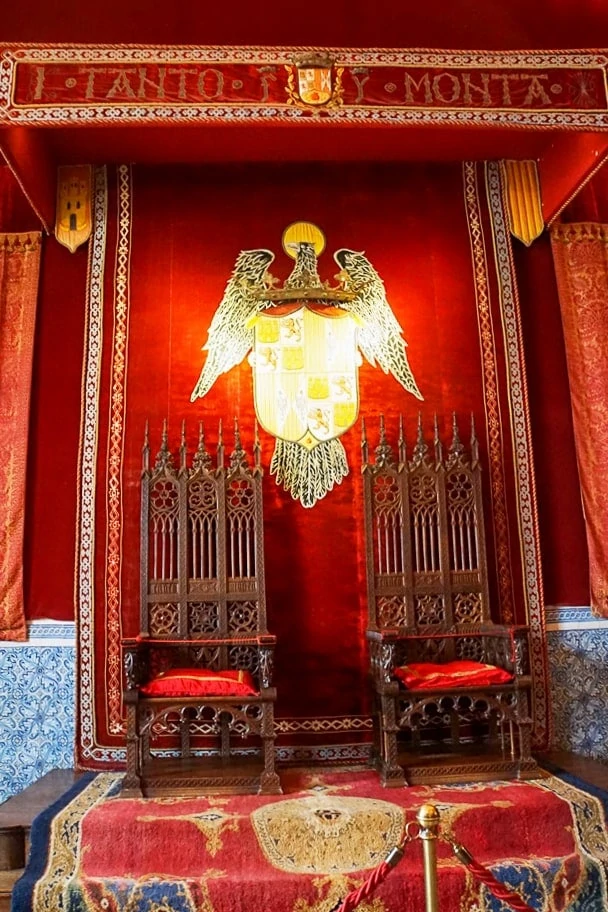
By a guided tour
If you’d rather not worry about logistics, consider taking a day trip from Madrid. Tours such as this one offer guided entry into the Alcazar as well as a tour of Segovia and the medieval aqueduct.Book here a full-day guided tour from Madrid to Segovia and Avila.Alternatively, you can book a day trip that combines a visit to Toledo and Segovia.
Once you arrive in Segovia, the best way to get to the Alcazar is to walk. Inside the Alcazar, there is no parking available. In the surrounding area, parking is very limited. If you can find a parking space, only on Saturday afternoon and Sunday street parking is free.

Opening Hours
Summer: (from April 1 to October 31) from 10:00 to 20:00
Winter: (from November 1 to March 31) from 10:00 to 18:00
Tickets must be purchased at least 30 minutes prior to closing time.
Regular Admission Rates
Full Entry- 8 euros
Entrance to the Palace, Artillery Museum, and Tower of Juan II
Palace and Museum Only- 5,50 euros
Tower of Juan II Only- 2,50 euros
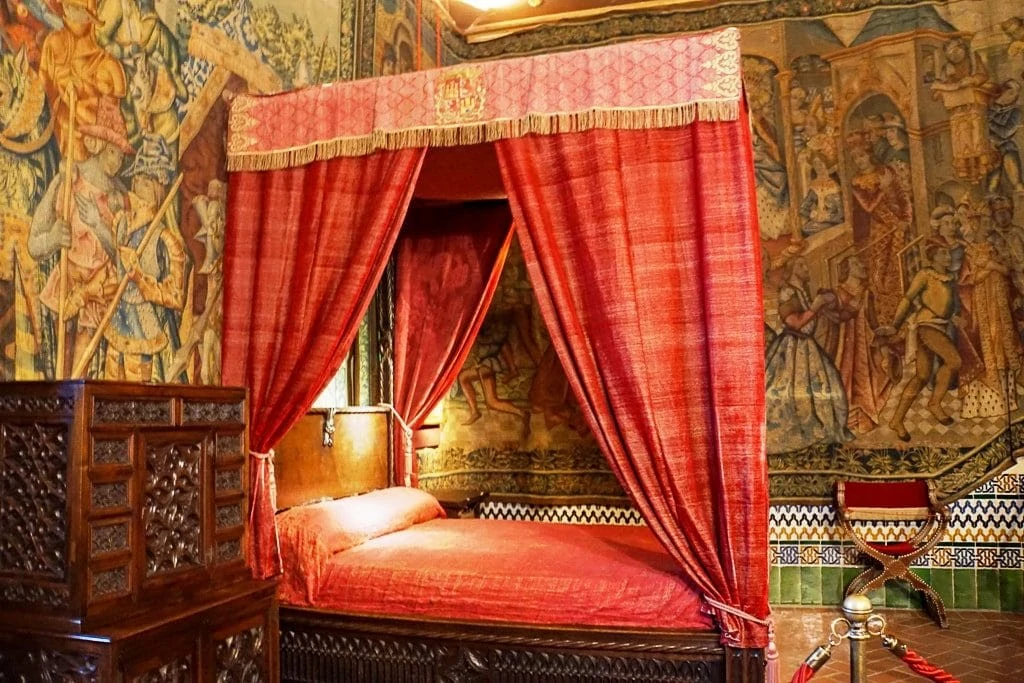
On-Site Tours
The Alcazar is easy to navigate without a guide. If you choose to explore the palace on your own you can find free brochures to facilitate your visit at the information desk in Spanish, English, French, German, Italian, Japanese, Portuguese and Russian. For a more in-depth understanding and exploration of the Palace and Artillery Museum, two types of tours are available for purchase through the Alcazar.
Standard Tour- 2 euro
Only available in Spanish, tours of the Palace and Artillery Museum are usually available every 30 minutes. Tours last 45-60 minutes and tickets must be purchased at least 5 minutes prior to the start of the tour.
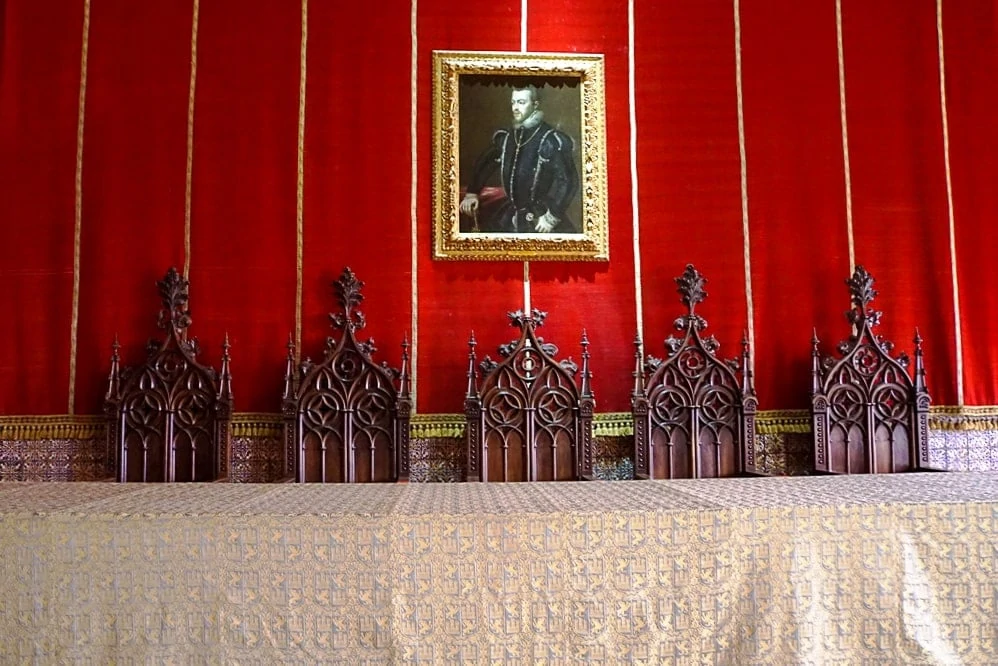
Reserved Guide- 40 euro per guide
Private guided tours of the Palace and Museum are available in Spanish, English, and French depending on availability of guides. Your group can include up to 35 people and reservations must be made at least 48 hours in advance.
Things to Do in Segovia
Many people visit Segovia as a day trip from Madrid or one of Spain’s larger cities. However, there is plenty to discover over the course of several days in this ancient city. Once you’ve thoroughly explored the Alcazar, head back down to the city to search for even more Spanish treasures.
Aqueduct of Segovia
The city is home to one of Europe’s greatest Roman monuments. The aqueduct dates to the 1st century run more than 15 kilometers outside of the city and were still in use to transport water to Segovia from the Frío River until the 19th Century.
Segovia Cathedral
Compared to some of the city’s other historical sites, Segovia’s Cathedral is relatively new. The current cathedral was built after the original was destroyed in the Revolt of the Comuneros in 1520. Although it was constructed during the renaissance, Segovia Cathedral was designed and built in the Gothic style making it one of Europe’s newest original gothic buildings.
Museo de Segovia
Swing by the Casa del Sol, one of the fortified buildings in the city wall, to see more than 1,500 pieces of art and artifacts that tell the story of Segovia’s history. One of the most impressive exhibits at the museum is a pair of 2,500-years-old carved Iberian boars.
Royal Palace of La Granja de San Ildefonso
If you’re visiting the Alcazar because you love palaces, don’t skip this palace. It’s located around 10 kilometers outside of the city, but the 1,500-acre complex located in the foothills of the Guadarrama Mountains is open to the public. The palace was built by King Felipe V in the 18th century as a summer residence. Inside is an impressive tapestry collection including some that belonged to Isabella the Catholic.
Iglesia de la Vera Cruz
This Romanesque church was consecrated in 1208. It dates to the crusades and the architecture mimics that of the 4th century Church of the Holy Sepulcher in Jerusalem.

